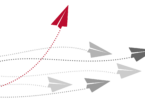ATHENS, Ga. – “Tagging,” a term used by graffiti artists to describe writing, is the name of a new University of Georgia student project that will allow Internet users to cover downtown Athens with virtual graffiti.
The project allows anyone using a wireless Internet-capable (WiFi) handheld device with a Web browser to select their location from an online map and use a stylus to “tag” images of surrounding buildings on a handheld computer screen. The graffiti is then stored in a database and becomes part of a virtual cityscape of downtown Athens.
The tagging project originated as a collaborative effort launched by Ideas for Creative Exploration (ICE) and the New Media Institute, two interdisciplinary programs at the University of Georgia. Continuing the mission of using the wireless cloud over downtown Athens (also known as the WAGzone) as a test bed for emerging wireless technology, the two groups asked artists to develop works specifically for the wireless environment.
Christopher “Kit” Hughes answered the call with the Tagging program for virtual graffiti. Tagging first debuted in demo form at the New Media Institute event “Go Mobile or Go Home” in April 2003. Since then, Tagging has grown into an extended research project supported by a summer fellowship from the Center for Undergraduate Research Opportunities (CURO) at UGA.
Tagging is an art project straddling the genres of technophile net.art and visceral street graffiti; likewise, the technological underpinnings are serving as entertainment and research. The project integrates dynamic content with motion graphics on a foundation of database technology. These three areas are reaching mainstream use on the Internet but have not been fully explored in a wireless environment.
While the primary objective of Tagging has been to serve as a work of art, project users will provide useful feedback regarding interface preferences, bandwidth limitations and the potential of location-based wireless technology. These participants will have a first-hand role in exploring the possibilities of these devices in the virtual cityscape of Athens. Research findings will be published in a report written by Hughes.
As with traditional graffiti, each person may add to previous graffiti or create his or her own. The results are available for immediate viewing both on the device and on the project Web site at www.tagging.us. Virtual vandals will have their chance at tagging Athens when the project is completed near the end of September.







